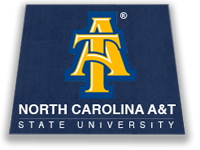Below is a summary of the abstract you submitted. Presenting author(s) is shown in bold.
If any changes need to be made, you can modify the abstract or change the authors.
You can also download a .docx version of this abstract.
If there are any problems, please email Dan at dar78@pitt.edu and he'll take care of them!
This abstract was last modified on April 22, 2015 at midnight.

During the inaugural SEA-PHAGES Phages Hunters course at North Carolina Agricultural and Technical State University, we used the enrichment method to isolate and characterize four bacteriophages that infect Mycobacterium smegmatis. Three of the mycobacteriophages were isolated from soil samples in the Greensboro, NC area while the other, “Schmeg Griffin”, was isolated from Chesapeake, VA. While three of the four phages appeared to be characterized by a lytic life cycle, mycobacteriophage "Bactobuster" appears to exhibit a temperate life cycle based on several factors, including plaque morphology, size and number. Given its distinctive life cycle among the isolated phages and its unique banding pattern during restriction mapping, Bactobuster was chosen for further characterization. The genome was thus submitted for whole genome sequencing at the University of Pittsburgh and annotated using DNA Master, as well as associated bioinformatics software programs. The Bactobuster genome consists of 52,129 bp, with a GC content of 63.1 %. Autoannotation identified 92 open reading frames (ORFs), with approximately one-third of the ORFs being in the forward direction. Based on sequence similarity, Bactobuster appears to be a member of cluster A, sub-cluster A2. Among the 67 family members in sub-cluster A2, Bactobuster appears to be most closely related to the mycobacteriophages Pukovnik, Power, Trixie, and Adzzy. Bactobuster and Pukovnik, a mycobacteriophage isolated from Fort Bragg, NC, exhibited the greatest similarity, sharing 94 % sequence identity at the nucleotide level. Interestingly, Bactobuster gp2, which was highly similar to Pukovnik gp2, showed high sequence similarity to the Bacillus anthraxis lethal toxin gene, according to HHPred. On the other hand, several ORFs with strong coding potential did not align well with any known proteins in either the PhagesDB or the NCBI databases, suggesting that they may correspond to novel genes.
